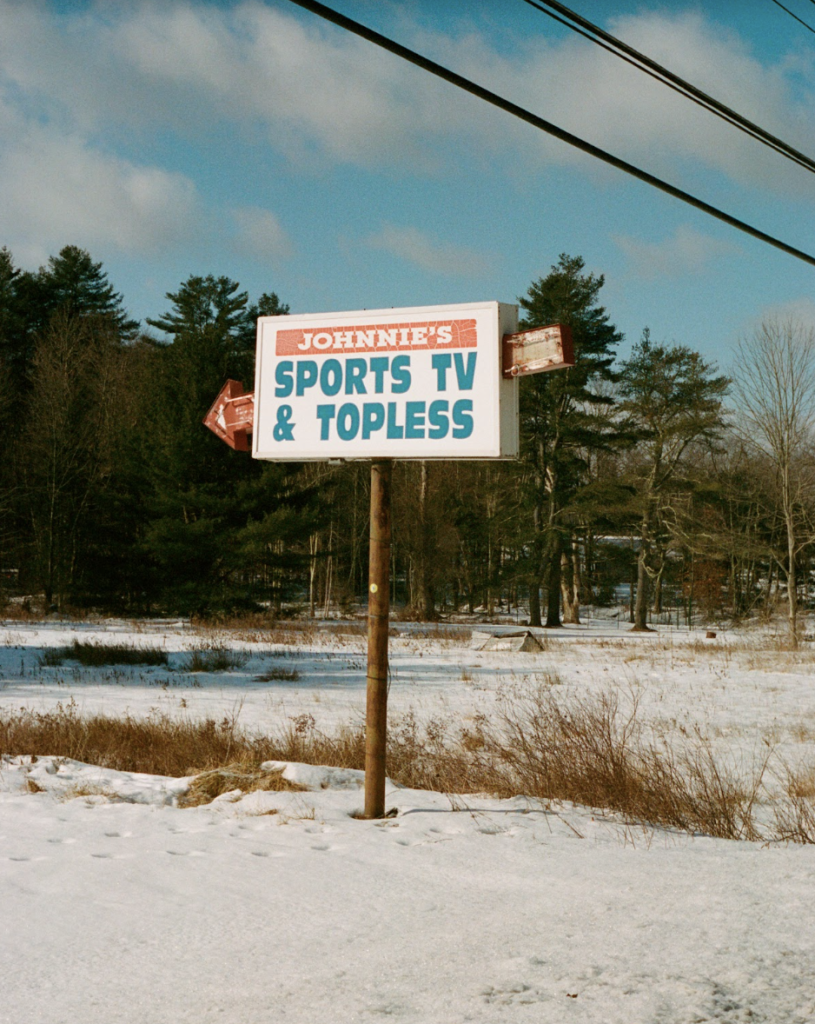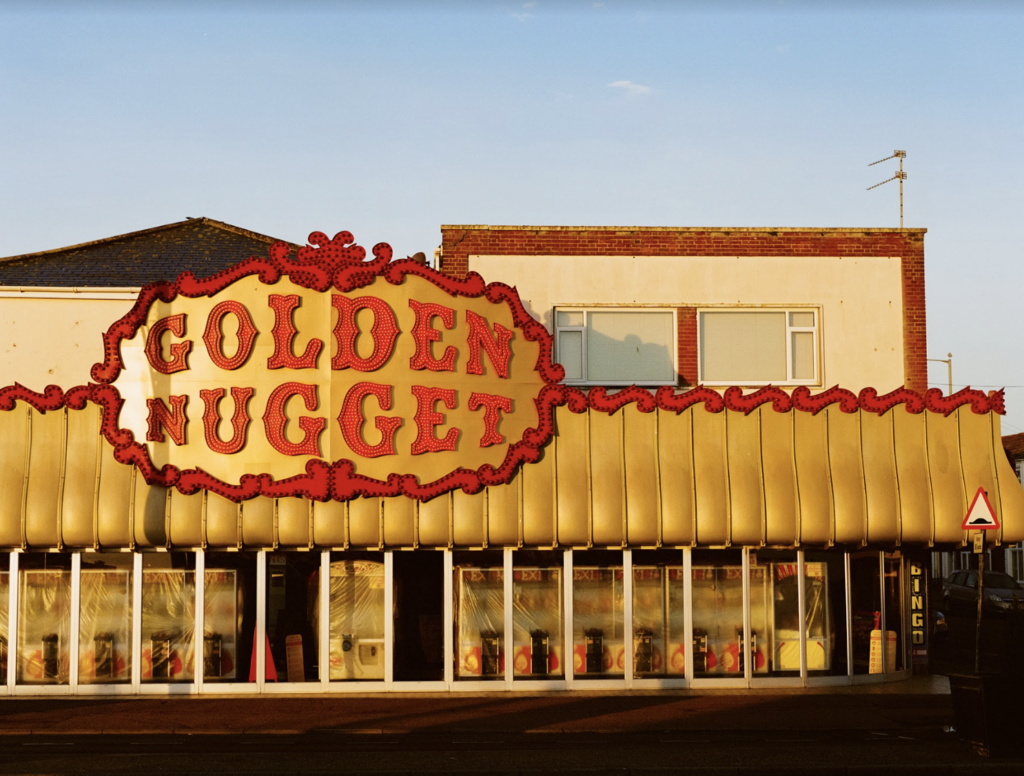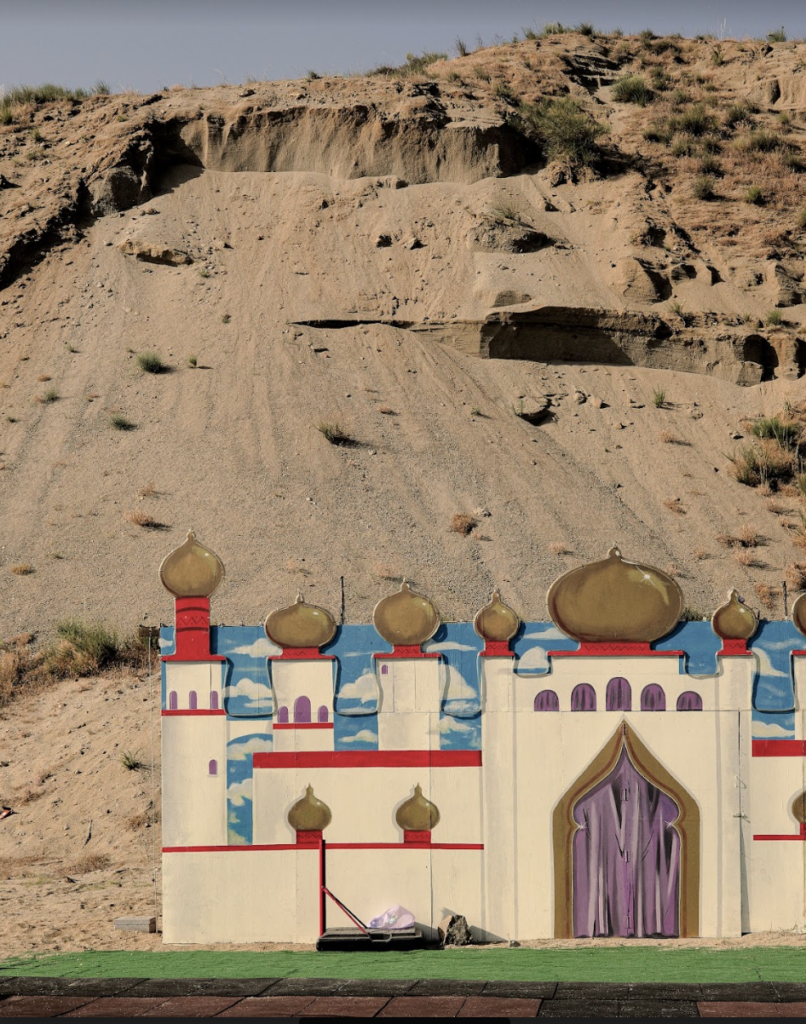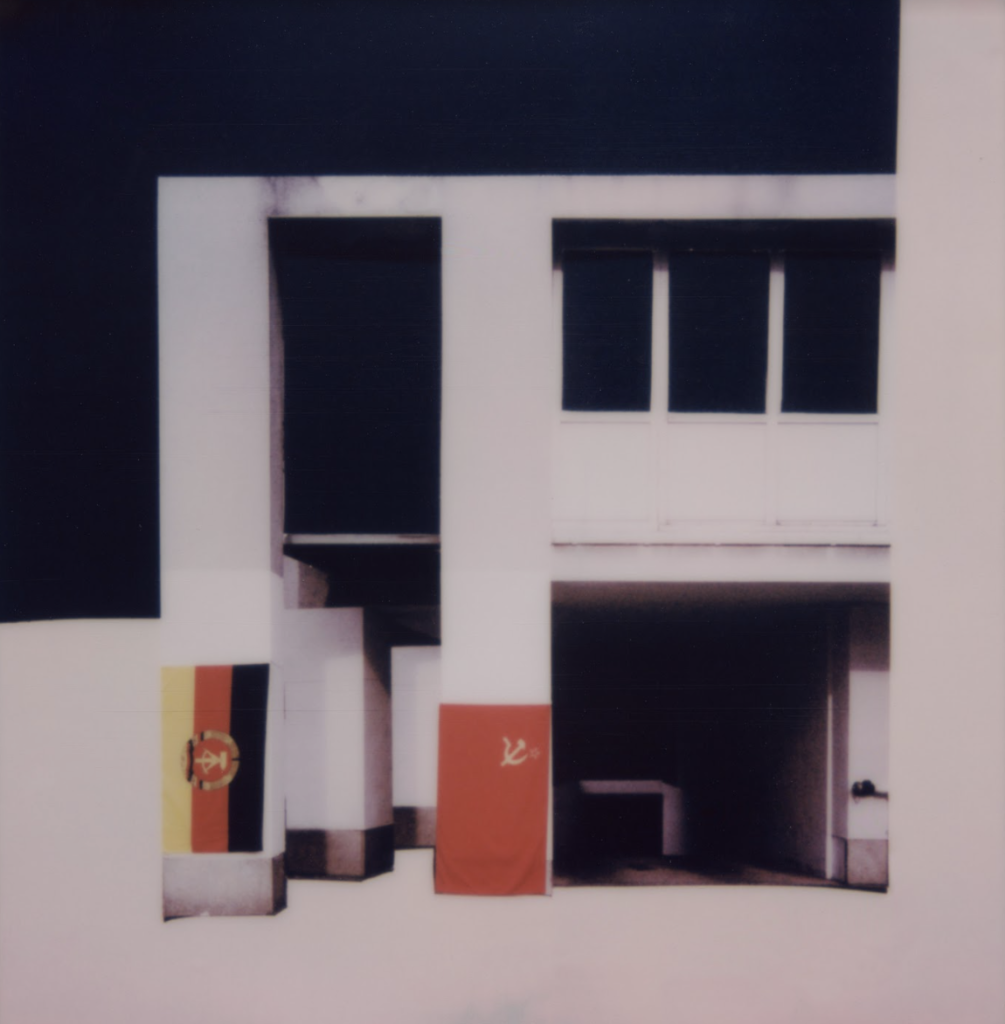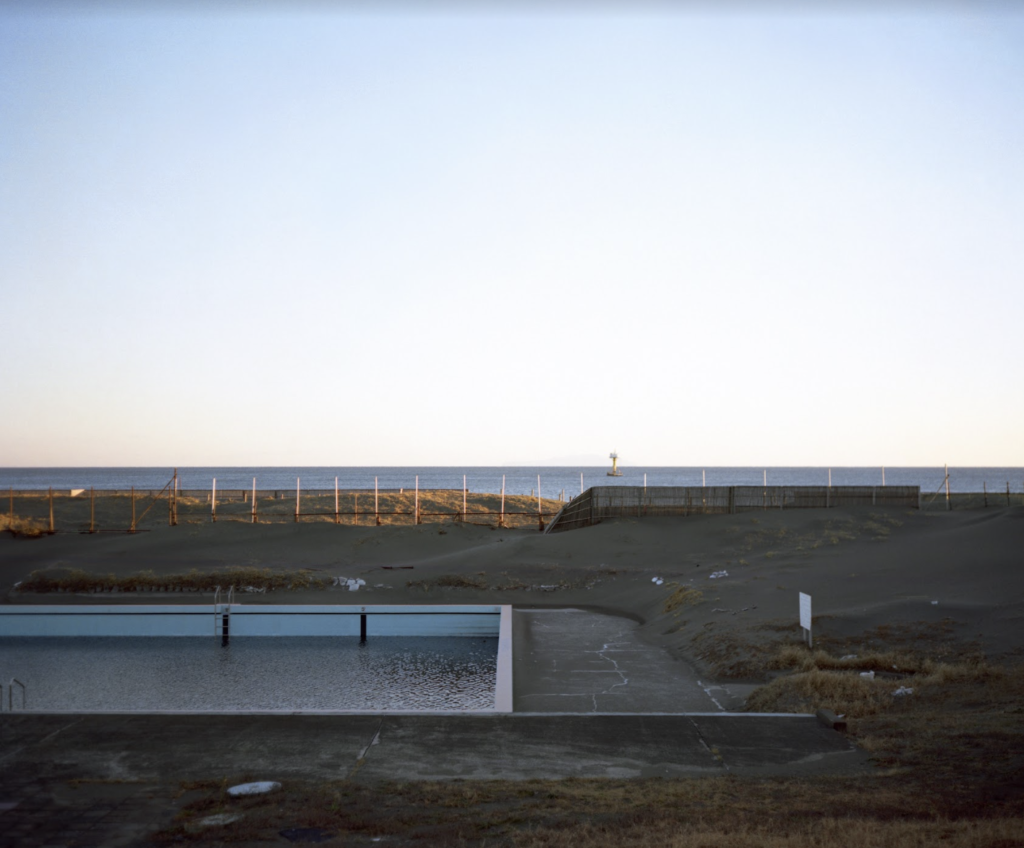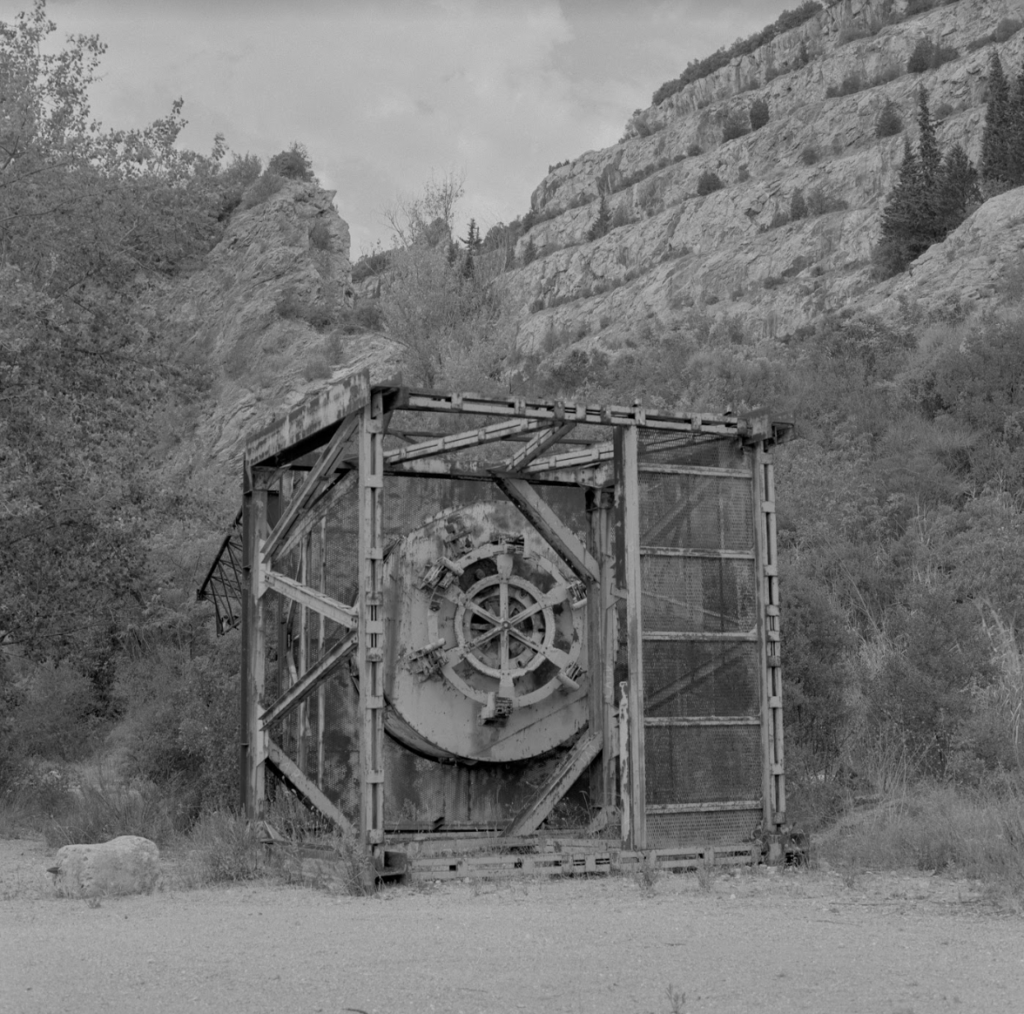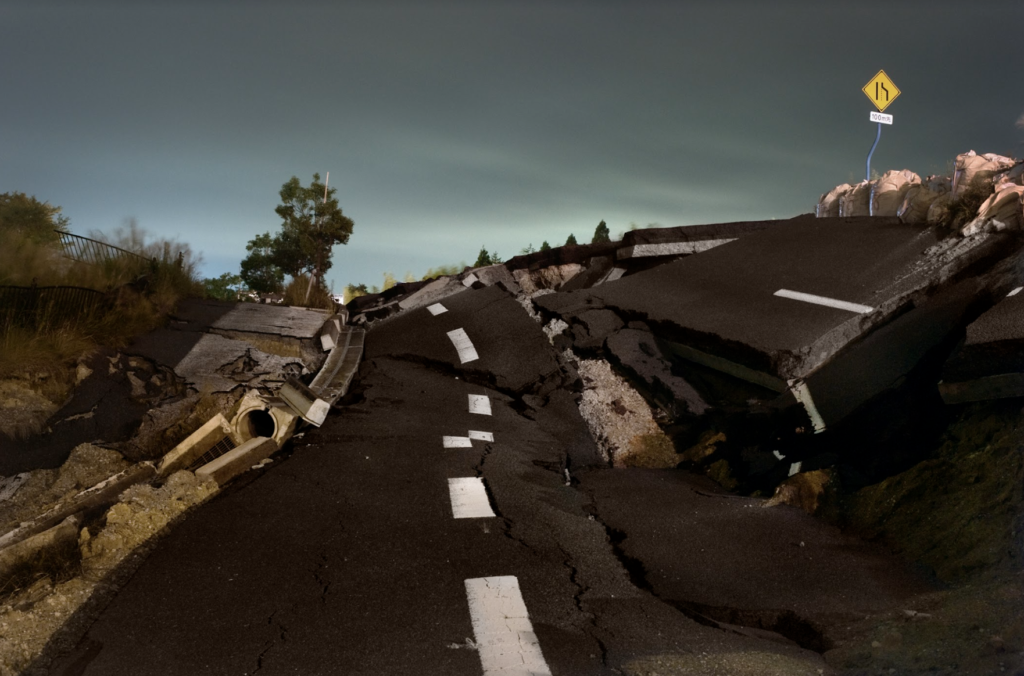Paolo Testa, Charlie Biglin, Andrea Tonellotto, Alessandro Mallamaci, Masato Ninomiya, Filippo Barbero and Massimo Mastrorillo explore the art of capturing a still, and uninhabited scene, sharing images of deconstructed roads, side-highway neon signs, barren landscapes and abandoned buildings. The art of capturing the uninhabited is one that is far more nuanced than it seems. The characters of a photograph become the land and all of its personality, that can be almost grasped at from outside of the photograph. All the above photographers also grapple with the contrast man-made structures, contrasting natural environments. This is a relationship that is at times awkward and tumultuous, though also nuanced and complex, and allows us to revalue the context of objects within a given space.
Sports TV & Topless shows a rusted sign pointing toward the direction of snow fall. The sign is reminiscent of the 1950s diner aesthetic, and the loud and drunken sports-bar culture. Rusting and withered, the un-lit neon arrow points towards the left: the direction of the past. It is as though in that moment, the viewer has the opportunity to choose– in which direction will they travel?
Golden Nugget, shows a large gold and red lit, kitsch, sign to what appears to be a game-hall. This work is part of Bigin’s series, ‘Greatest Yarmouth’, which is an on-going collection of images curated since lockdown in 2020. Bigin’s goal with the collection is to celebrate the Great Yarmouth’s most iconic monuments and memorable places from his own personal experience from having grown up there. This image in itself reflects a nostalgia for the past, for play, and for how places of our childhood decay overtime, and in our memory.
Un Luogo Bello #002, shows a playful set-design-esque painted castle, propped up against a backdrop of sanded hills and slopes. The image is taken in The valley of the Sant’Agata river, which is nestled in the red land of the Aspromonte mountains, in Southern Italy. The land flows towards the sea, until it plunges into the Strait of Messina. Mallamaci notes that the name of the waterway originates from the Greek aghatè, which is linked to concepts such as beauty, goodness and nobility. The joining of artificial wonder with the castle cut out, and physical wonder of the land, creates a beautiful harmony of dreamlands and escape. It provides an interesting balance between where the natural world begins, and the man made world ends.
Flag, shows a history of Berlin. A white building stands draped in the Soviet Union and German flag, still and uninhabited. Tonellotto notes, that In 2021, 60 years will have passed since the beginning of the construction of the Berlin Wall, but, above all, it will have also been 30 years since Berlin returned to being only Berlin again, without East and without West, officially becoming the capital of reunified Germany. This work shows the bones, of a Berlin that no longer exists. The dark windows and scorched shadows are relics of the past, and with a blank looming stillness, call towards the possibility of the future.
Abandoned Pool similarly plays between the space of artificiality and natural beauty within a still scene. Despite the interesting shapes and patterns the swimming pool’s water makes– similar to that of the sea behind it– it is encased by a harsh turquoise, that deeply contrasts the golden hues of the grass that attempts to escape the manmade structure it is swallowed by. The crane in the distance of the ocean, acts almost as a flag of the material world, that though far, never relinquishes its unceasing grip.
Nullus enim locus sine Genio #2 shows an old man-made structure that appears rusted and out of use, in the middle of nature. Though the structure contrasts to the natural scenery of the mountains and rocks– given the colour palette of the image– it almost at first, blends in before the viewer notices there is something out of place. This work beckons the question of context: and how context changes our own perceptions and values of given objects. Once we situate the wheel, its very nature takes on new meaning.
Aftermath is from his project “Kaiju” about the aftermath in Fukushima. The crumbled and disintegrating road blends in with the rubble and rock, and restructures into a more natural and mountainous form, as opposed to its previously straight and man-made qualities. It almost functions as a reminder, that after disaster and disorder, that which reigns supreme are the natural forces and all of their shapes and edges. Nature has been here before and it will continue to be here after. The trees ahead remain unharmed, and add a sense of balance to the devastation of the road, and the scene. A note toward the endurance of earth, even in the face of devastation.


